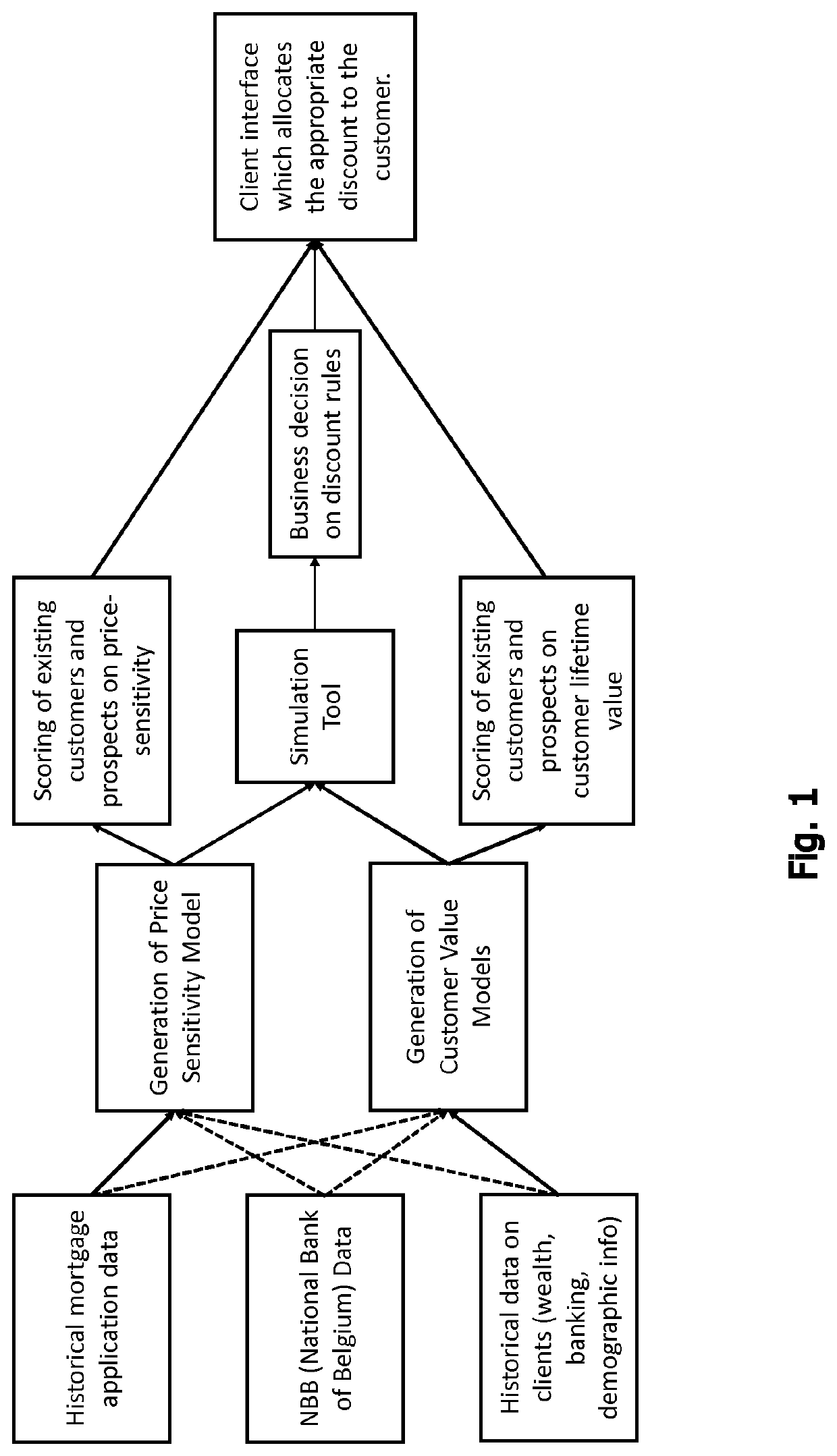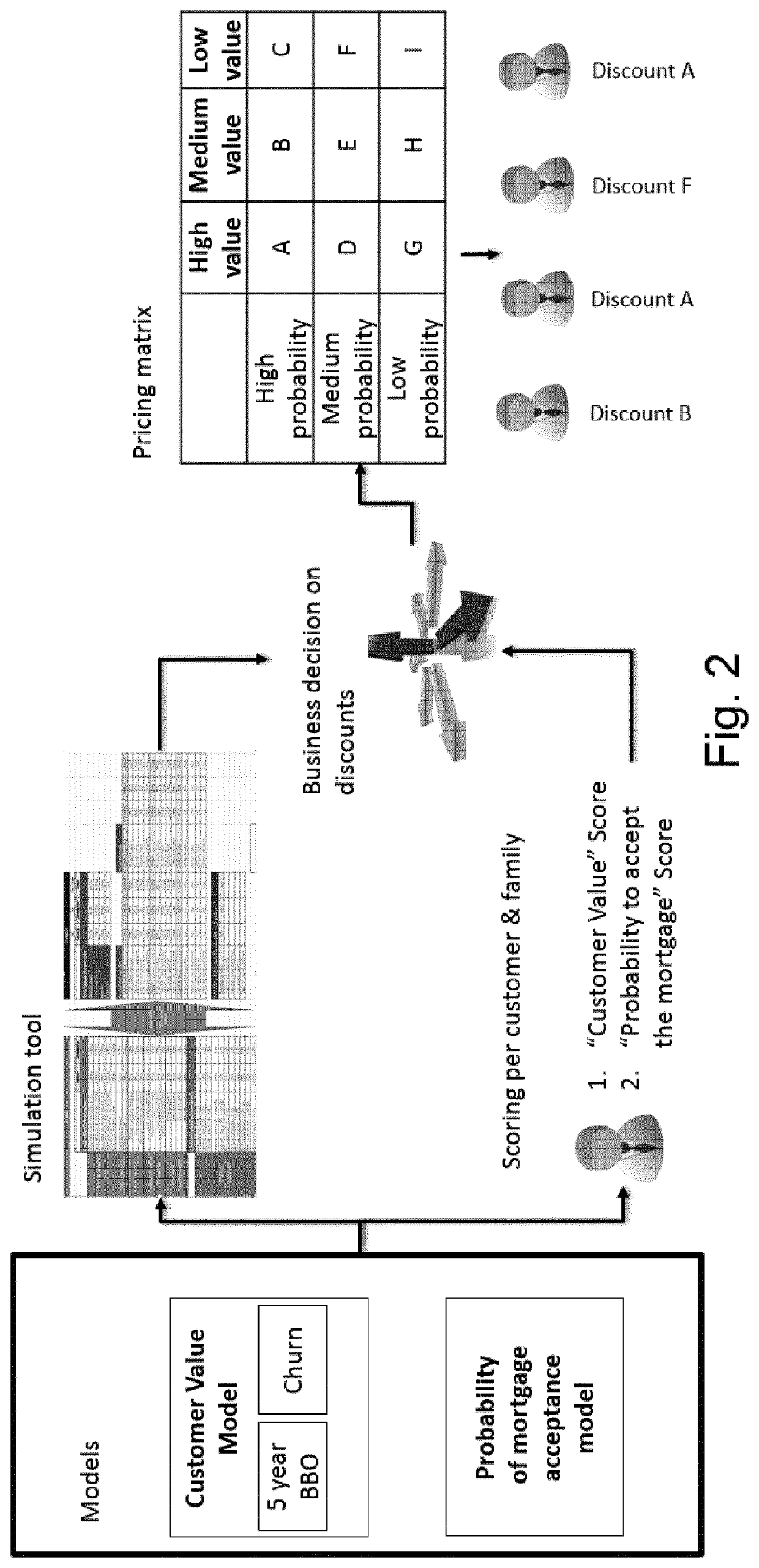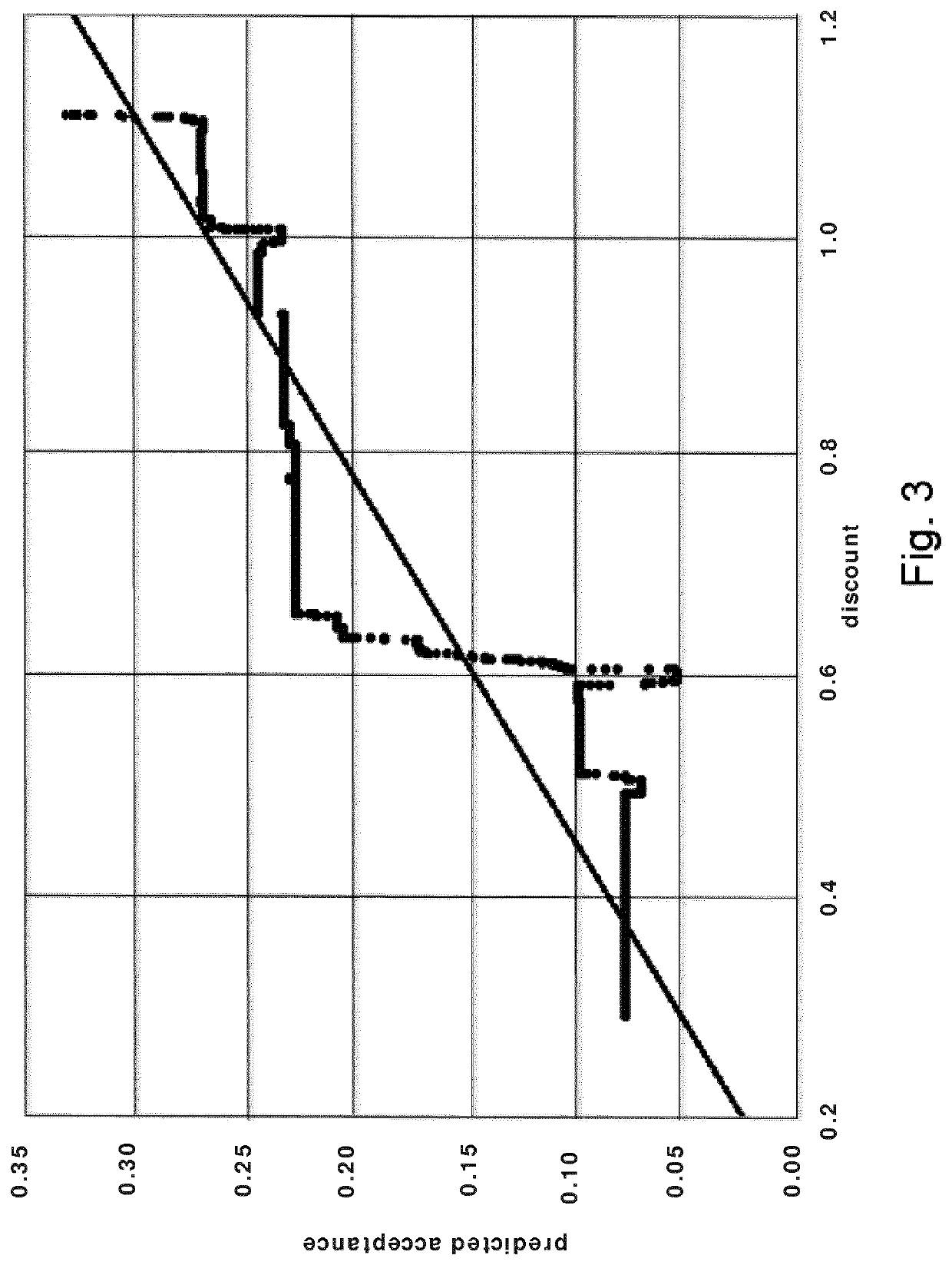Improved Mortgage Pricing
a technology for mortgages and discounts, applied in the field of mortgage pricing, can solve the problems of increasing the price, increasing the risk, reducing the acceptance rate, etc., and achieves the effects of increasing the discount rate, reducing the risk, and increasing the discount ra
- Summary
- Abstract
- Description
- Claims
- Application Information
AI Technical Summary
Benefits of technology
Problems solved by technology
Method used
Image
Examples
example 1
ystem Overview
[0066]FIG. 1 shows an example system overview illustrating the present invention. The example system allows automated allocation of mortgage discounts. The discounts relate to mortgage requests from customers and / or prospects. The system is configured by means of stochastic models. The stochastic models are used to segment customers according to price-sensitivity and customer-lifetime-value. The segments, together with appropriate scores for price-sensitivity and customer-lifetime-value, allow to allocate discounts for mortgages in an automated fashion.
[0067]The system makes use of historical data to model the process of accepting a mortgage, and to model the evolution of revenue generated by the client after completing a mortgage negotiation, among existing customers of the issuer of the mortgage.
[0068]There are two primary customer characteristics which are modeled in the system: price-sensitivity and customer-lifetime-value. The models which underlie the estimates o...
example 2
f Price-Sensitivity Calculation
[0075]FIG. 3 shows an example relation between predicted acceptance and discount for an individual customer. Particularly, the probability of acceptance of the mortgage by the customer is calculated by means of the price-sensitivity model and is plotted for 10000 discounts. For each dot, the predicted acceptance is calculated for the given discount. As can be expected, the predicted acceptance on average increased with increasing discount. This is reflected by the positive first derivative of the trend line displayed in FIG. 3. The trend line is obtained from linear regression, e.g. based on a Least Square Error criterion or a Least Absolute Error criterion. In this example, the price-sensitivity score is based immediately on said first derivative of said trend line, the so-called “slope per person”. These first derivatives are rank-percentiled within the population of interest to calculate the final price-sensitivity scores.
example 3
f Customer-Lifetime-Value Calculation
[0076]FIG. 4 illustrates example system aspects relevant to customer-lifetime-value calculation.
[0077]For each customer or, equivalently, mortgage applicant, separate models are determined for 1, 2, 3, 4 and 5 year time horizons. Furthermore, for each customer, there is a differentiation between the non-take event and the take event, as well as a differentiation between value and churn relating to the customer (person) and the one or more company to which the customer relates, e.g. the company owned by the customer.
[0078]The value relating to the individual customer is based on the sum of gross profit of the customer and all related trusts within a given time period.
[0079]The value relating to the company is based on the sum of the gross profit of companies with first and second degree relationships to a given customer within a given time period.
[0080]For each time horizon, estimates are produced for customer value and likelihood of customer chur...
PUM
 Login to View More
Login to View More Abstract
Description
Claims
Application Information
 Login to View More
Login to View More - R&D
- Intellectual Property
- Life Sciences
- Materials
- Tech Scout
- Unparalleled Data Quality
- Higher Quality Content
- 60% Fewer Hallucinations
Browse by: Latest US Patents, China's latest patents, Technical Efficacy Thesaurus, Application Domain, Technology Topic, Popular Technical Reports.
© 2025 PatSnap. All rights reserved.Legal|Privacy policy|Modern Slavery Act Transparency Statement|Sitemap|About US| Contact US: help@patsnap.com



